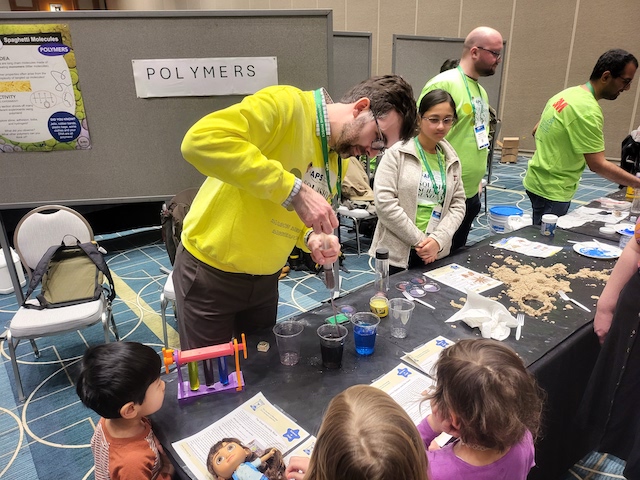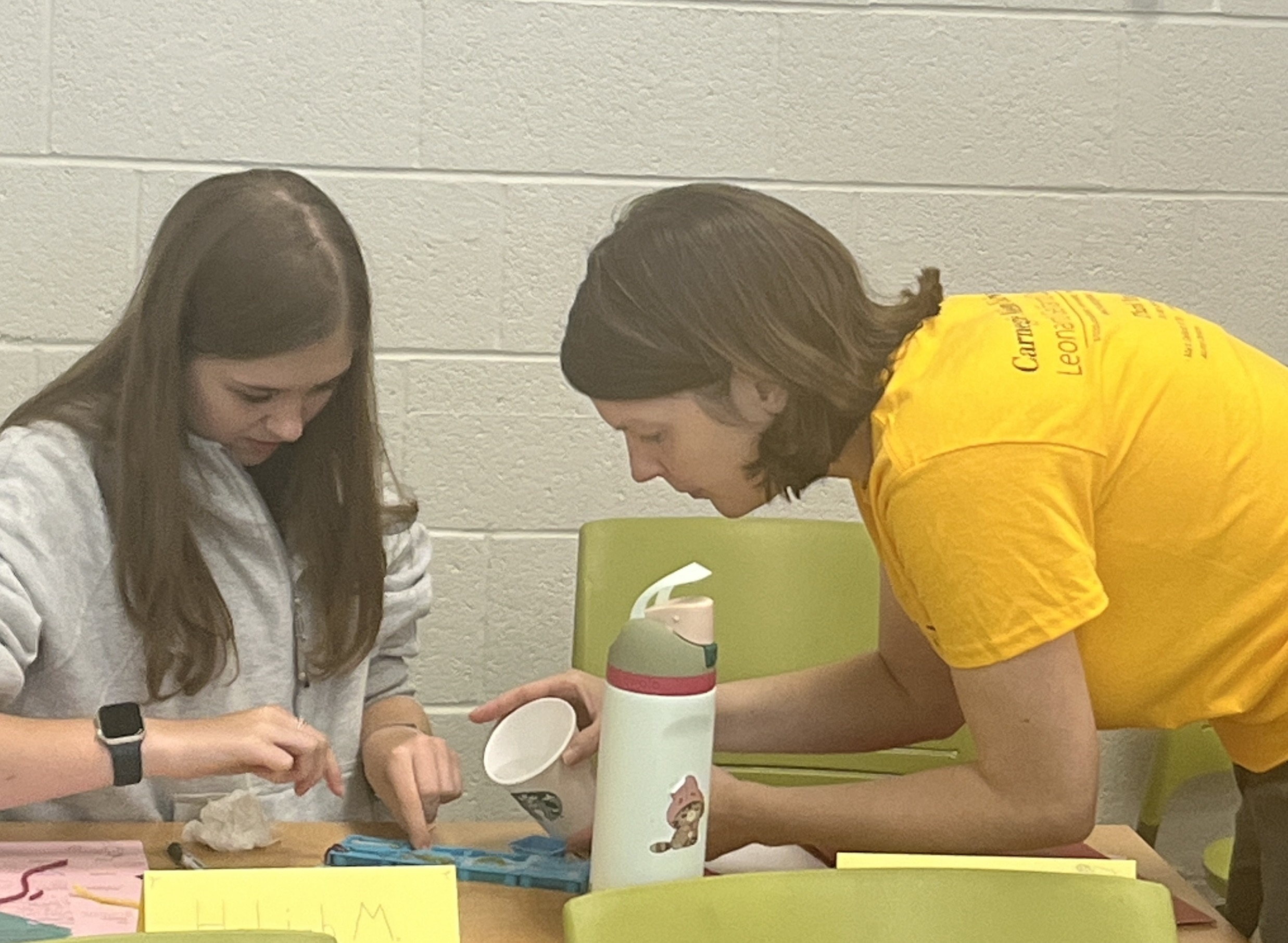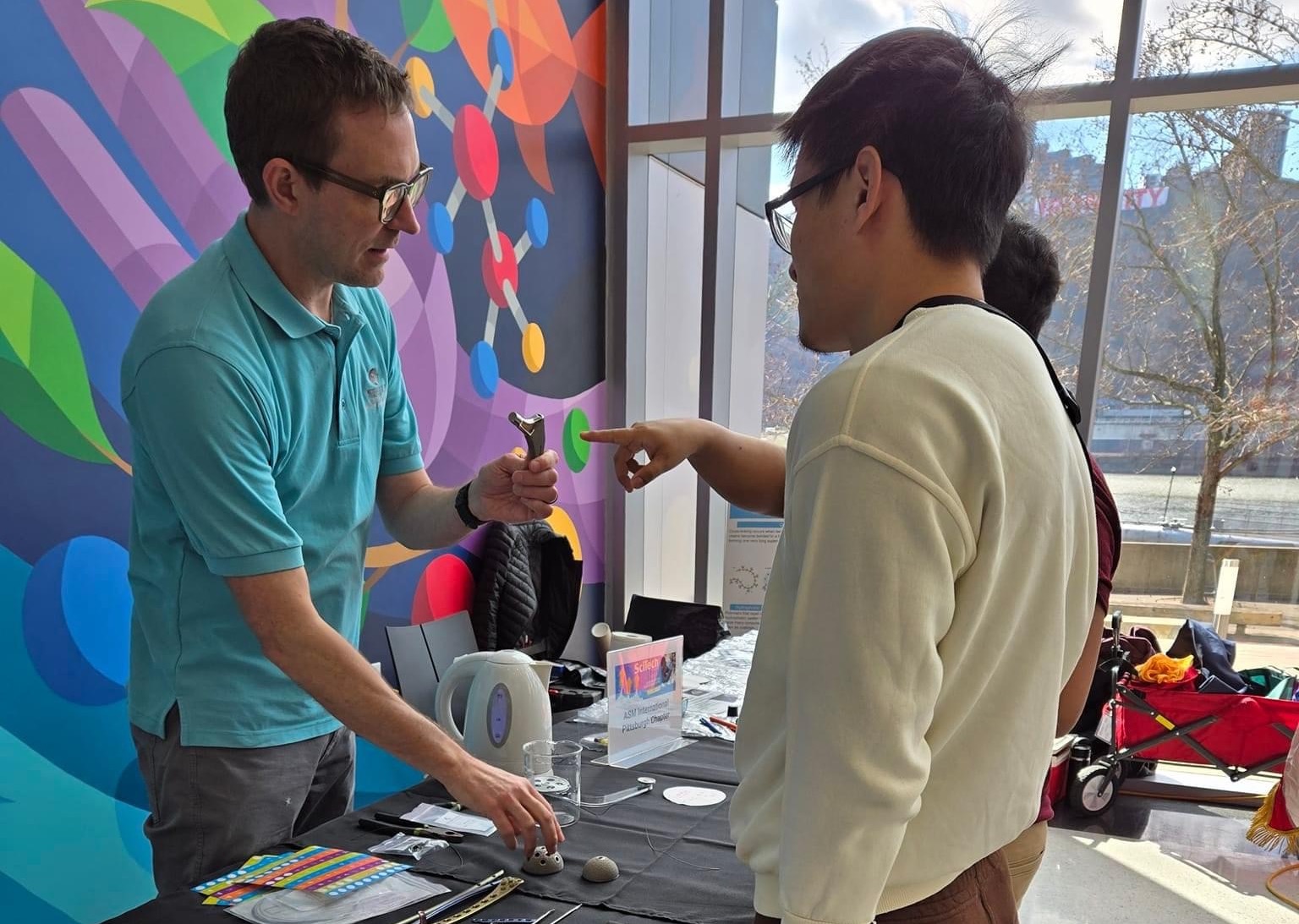Sparking interest in materials science
Monica Cooney
Jul 31, 2024
Have you ever thought of the material properties that make slime viscous, kinetic sand stick together, or a dish break? These are just a few of the everyday life connections that materials science and engineering faculty are drawing upon when connecting with elementary, middle, and high school students to foster their interest in the discipline.
Last March, when Thomas O’Connor traveled to Minnesota for the American Physical Society’s Annual Meeting to present his group’s research, he was also co-organizing the organization’s first-ever “Squishy Science Sunday” outreach event which drew families from around the region to learn more about biophysics, polymers, soft matter, and statistical physics. O’Connor led volunteers from the APS Division of Polymer Physics in running 10 of the nearly 50 tables of hands-on activities, showcasing the extraordinary properties of polymers through various types of play sand and slime.

O'Connor facilitates a demonstration at the APS "Squishy Science" event in March.
"It's important for us to give kids opportunities to have positive and fun scientific experiences outside of school. Those experiences can kickstart a life-long passion for science and engineering,” O’Conner said. "We are creating space for them to explore and enjoy asking scientific questions about the nature of the materials around them in a hands-on way. If we can help them enjoy being curious about the world around them, then we’ve succeeded.”
Closer to home, Mandie Krause has been involved in outreach activities both on and off-campus. At CMU, she has facilitated sessions with middle school students through the Gelfand Center. Over the summer, students in grades 6-8 spent a week on campus learning about various aspects of research from faculty representing a variety of disciplines. Krause enjoys the opportunity to spark students’ awareness of materials science.
“Materials play an important role in their lives and this exposure shows them how they can engineer something to make a difference,” she says.

Krause assists a student with an experiment during the CMU Gelfand Center's Summer Camp.
During Krause’s presentation and demonstration, the students learned what a ceramic is, what makes it different from metals and plastics, what it is used for, and why it breaks. To apply these concepts, students then get to design and make their own composites to test which structures don't break.
“Many kids are curious about the world around them. By engaging in STEM activities, they can learn about how things work,” says Krause. “It also empowers them by informing them that they can improve some technology or make something new.”
Krause also worked off-campus earlier this year with a Pittsburgh Creative and Performing Arts (CAPA) visual arts class, where the students learned about the science of pottery and glaze and learned the similarities between artistic design and scientific exploration.
We see the value of engaging students prior to entering college, so they can be more aware of the opportunities available to them
Greg Rohrer, W.W. Mullins Professor, Materials Science and Engineering
In addition to these outreach efforts with students, MSE faculty have been involved in programs that have made a lasting impact among educators who are able to incorporate materials science into their classrooms. In 2004, professor Greg Rohrer led an NSF-funded summer research institute that brought high school teachers from across the region to campus for workshops on how they could present materials science curriculum into their classrooms in ways that would be engaging to their students.
“Our department offered this program because we see the value of engaging students prior to entering college, so they can be more aware of the opportunities available to them through a materials science and engineering degree,” said Rohrer.
Justin Sickles, a high school teacher in the West Mifflin Area School District, participated in the program and since has helped students to become more aware of opportunities in materials science and engineering.
The results of integrating materials science into the curriculum are evident as several students that Sickles has taught have gone on to pursue the major after high school. Sam Franco, a rising junior in the materials science and engineering department, was introduced to materials science by Sickles in his sophomore year of high school and credits his teacher for sparking his interest.

Justin Sickles represents ASM Pittsburgh chapter during SciTech Days at the Carnegie Science Center.
“He (Sickles) told me about this new class he was teaching called Materials Science. He described it as ‘the science of how stuff is made up,’ and it piqued my interest,” said Franco. “Learning about crystal structures in high school was helpful, and in the introductory class for MSE we talked about the same things with some more depth.”
Since participating in the institute at CMU, Sickles has gone on to be trained as a Master Teacher of Materials Science by the ASM Materials Education Foundation, which seeks to support teachers and transform classrooms so students can further develop their interests in the discipline.
“ASM has many opportunities for science educators to incorporate materials science into their classrooms, both through grants and workshops,” said Sickles. “We are seeking participants in the Pittsburgh region and beyond to continue to foster connections in their curriculum.”
This summer, Sickles trained three high school teachers on site at West Mifflin Area High School, and he hopes they will continue to inspire future generations of materials scientists.
